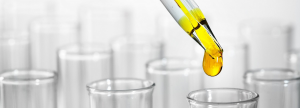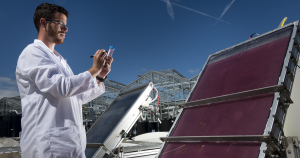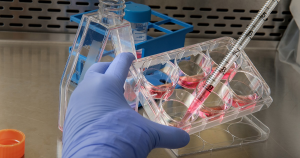The standardised biodegradability tests are designed for analysing mono-constituent substances, whereas cosmetic creams are made up of a mixture of different substances. The current methods thus require that each substance be isolated and tested separately.
Prompted by L’Oréal, the specialists at the GEPEA Laboratory and Capacités developed an alternative method for measuring the biodegradability of a mixture in its entirety.
The method they devised is based on investigating the transformation of carbon in a substance, as is brought about by microorganisms. When it comes to biodegradation, the best-case scenario is that the carbon is transformed through the release of CO2 and by being partially integrated into the microbial biomass.
In determining the amount of residual CO2 and the small fraction of carbon integrated into the biomass, Capacités’s specialists are able to assess the biodegradation level of creams. This evaluation is followed up by ecotoxicological testing to measure the impact of the residual waste carbon upon its release into the environment.
A study outlining this new method was published in Green Chemistry, a highly regarded peer-reviewed journal that is widely read among the scientific community. Owing to this innovative initiative, L’Oréal is gradually acquiring the necessary skills and knowledge in order to optimise biodegradability evaluation for its cosmetics.
To successfully complete this project, the Capacités’ experts benefited from support and technical equipment from the GEPEA, joint research unit of Université de Nantes, Oniris, IMT Atlantique and CNRS (The French National Centre for Scientific Research).






